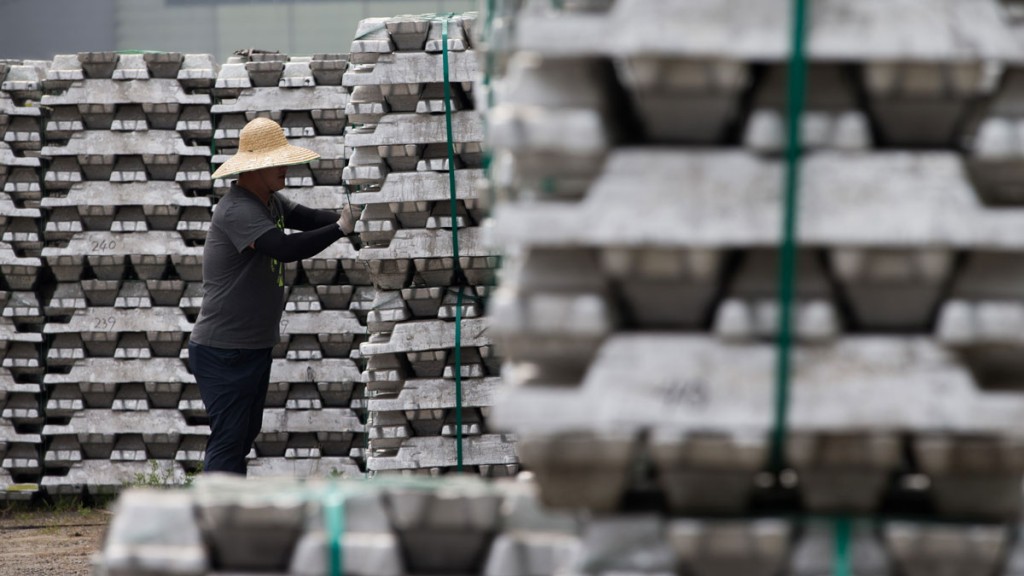
Today we turn our attention to a metal which often passes without notice.
It isn’t glamorous like gold or silver, nor is it rare like platinum or rhodium.
It isn’t controversial like uranium, strategic like tungsten or cobalt, nor even widely talked about like iron or copper.
But it has, quietly, had a stellar 2016. It’s currently up almost 60%.
Today we’re talking zinc…
Zinc is in short supply
Having started 2016 at just over 70c per pound, the price currently stands at $1.17 a pound.
Here’s the chart. If there’s a clearer uptrend in any asset class this year, I’d be glad to know what it is.
All of the usual factors have been driving the price. Firstly, there’s a lack of supply. China is the world’s top producer, contributing some 37% of global supply last year. However, last year it shut down some 26 lead and zinc mines for environmental reasons.
In addition, Australia’s Century mine and Ireland’s Lisheen mine, which between them produced about 5% of the global supply of zinc, have shut down due to depletion. Meanwhile, Glencore Xstrata’s Perseverance and Brunswick mines also recently closed.
The amount warehoused at the London Metal Exchange (LME) has fallen steadily. This chart shows LME stocks over the last five years. You can see how supply is falling each year.
As the zinc supply has dwindled, so the price has risen – and there’s nothing like a rising price to bring in more buyers.
The next chart is for diehard zinc nerds only – the rest of you can skip it. It comes from Nick Laird over at sharelynx.com and plots the zinc price in black over LME supplies in blue since 1971.
The relationship between LME stockpiles and price is not as pure and simple as you might think, but, as I say, this chart is for the interest of zinc buffs only. The rest of us can move on.
After iron, aluminium and copper, zinc is the fourth-most-used metal in the world. (Although be aware that in some years this title falls to titanium). Annual zinc demand stands at 13.4 m tonnes.
Per year, it is a $34bn market. To put that number in some kind of perspective, silver is about an $18bn market and platinum just $8bn. Copper meanwhile, is closer to $150bn.
What is zinc used for?
The main uses for zinc are as follows.
Galvanising
This is the most important use for zinc, accounting for about 50% of annual demand. Iron and steel are coated in zinc to prevent rust. Galvanised steel is one of the strongest construction materials there is. It’s used to make the frames of large buildings, bridges, beams, piping, roofs, staircases – you name it.
Batteries
The world’s first battery – invented by Alessandro Volta in 1799 – used zinc as an anode. Zinc is still used in all kinds of batteries, from cheap to expensive: zinc-air (such as in hearing aids); silver-zinc (used in the aerospace industry); zinc-bromine (for energy storage); and plain old alkaline batteries – such as the AAs I have in my computer’s mouse.
Solder
Zinc, lead and tin alloy is used to join electrical components and pipes.
Nickel-silver
This is actually zinc, copper and nickel, and is used in keys, zips, silverware and musical instruments (brass requires zinc).
Almost half of annual zinc demand comes from China, which is still building buildings and bridges, despite its economic slowdown. And if Donald Trump’s proposed infrastructure splurge comes to fruition, you can expect US zinc demand to grow considerably in the coming years. Zinc is a beneficiary of government infrastructure spending.
How to buy zinc
The simplest way to invest in zinc is to buy one of the zinc exchange-traded funds (ETF Securities offers a London-listed one under the convenient ticker ZINC) or to buy it via a spreadbet. All the usual risk warnings apply (particularly to the spreadbetting).
Alternatively, you can go down the individual company route. BHP Billiton (LSE: BLT) is the world’s largest producer, although, of course, it produces many other commodities as well, so it is not a pure zinc play. I like BHP and, like zinc, it is in a strong uptrend. At 1,326p it has more than doubled from its lows of below 600p at the start of the year.
Other large, UK-listed zinc producers include Anglo-American (LSE: AAL), Vedanta (LSE: VED) and KAZ Minerals (LSE: KAZ). All of these companies are in strong uptrends, and the last in particular is on a bonanza run, so caveat emptor.
A purer play might be Griffin Mining (LSE: GFM), which owns just under 90% of an operating zinc-gold mine about 300 miles north west of Beijing. However, while I’m mentioning the company, that does not constitute a recommendation – if you’re keen on the theme, then it’s one to do your own further research on. Otherwise I’d stick with one of the bigger players.